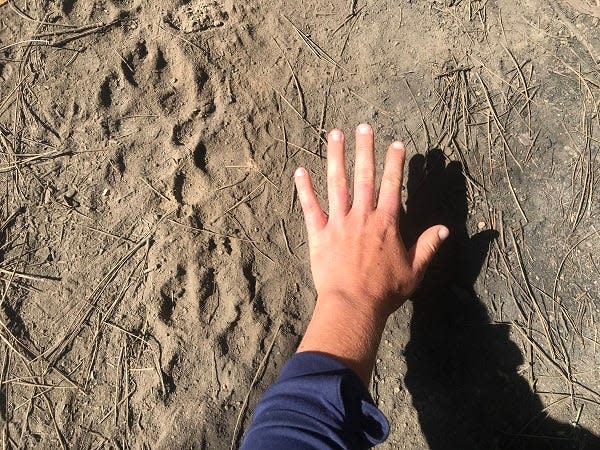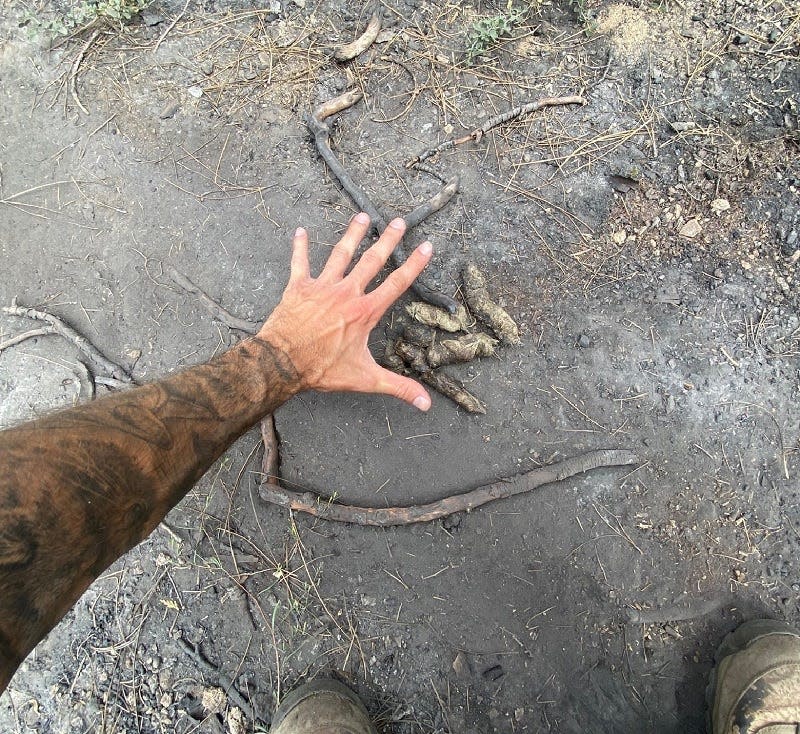New gray wolf pack found in California includes female, 4 pups
A new gray wolf pack was discovered in Tulare County, the California Department of Fish and Wildlife announced Friday.
This is the state’s southernmost pack and is at least 200 miles from the nearest known pack in northeastern California, according to the agency.
In July, the department received a wolf sighting report from a location in the Sequoia National Forest.
The department investigated the sighting, found wolf tracks and other signs wolves were present. A dozen scat and hair samples were collected for genetic testing. A DNA analysis confirmed that the 12 samples were gray wolf, CDFW officials stated.
The new pack consists of at least five animals not previously detected in California, including one adult female, who is a descendant of California’s first documented wolf in the state in recent history, OR-7, and four offspring, two females and two males.
In late 2011, OR-7 crossed the state line to become the first wolf in nearly a century to make California part of his range before returning to Oregon to form the Rogue Pack.
None of the samples collected came from an adult male. However, the genetic profile from the offspring indicate that the breeding male is a descendant of the Lassen Pack, wildlife officials said.

Gray wolves in California
Gray wolves are native to California but were wiped out in the state by the 1920s. Fish and Wildlife say there's evidence the Central Valley was once among the primary homes for gray wolves.
"Although gray wolves formerly inhabited California, their historic abundance and distribution is unclear. While there are many anecdotal reports of wolves in California, specimens were rarely preserved," officials wrote in a report on wolves in 2011, the years wolves were stripped of protections. "Wolves probably occurred in the Central Valley, the western slope of the Sierra Nevada foothills and mountains, and the Coast Ranges of California until the early 1800s, although their population size is unknown and may have been small."
Though people nearly hunted wolves to extinction in the Continental U.S., northern gray wolves returned to the Great Lakes, the northern Rockies, the Pacific Northwest and in small numbers in California.
Just as the U.S. was making progress to protect gray wolves, protections were stripped.
In 2011, Congress ended protections in the northern Rockies, and in 2020 the Trump administration stripped wolves of their critical Endangered Species Act protections across the country.
On Feb. 10, 2022, a judge ruled that fish and wildlife officials prematurely removed federal Endangered Species Act protections for gray wolves.
The decision restored protections for thousands of wolves.

Or-93
The California Department of Fish and Wildlife reported a young gray wolf known as OR-93 died after he was struck by a vehicle in Kern County in the fall of 2021.
The agency said the radio-collared wolf was found dead on Nov. 10 off Interstate 5 near the town of Lebec, the middle of the Grapevine connecting the Central Valley and Southern California. He was quickly identified as OR-93 because of his collar and an investigation and necropsy results determined he died from trauma consistent with vehicular strike.
The young male – possibly the first gray wolf in nearly a century spotted as far south as Ventura County – was born in northern Oregon in 2019 and crossed into California in January 2021.
OR-93 was documented traveling the farthest south since wolves returned to the state. He traveled more than 900 miles over three months, traversing Modoc, Lassen, Alpine and a half-dozen other counties before crossing Highway 99 and Interstate 5.
“The last documented wolf that far south was captured in San Bernardino County in 1922,” the department said.
Gray wolf facts:
The first pack was the Shasta Pack in 2015 (no longer active).
Today there are three confirmed packs in northern California: Whaleback Pack (Siskiyou County), Lassen Pack (southern Lassen/northern Plumas counties), Beckwourth Pack (Plumas and Sierra counties).
Wolves play a key role in keeping ecosystems healthy. They help keep deer and elk populations in check, which can benefit many other plant and animal species.
The carcasses of their prey help to redistribute nutrients and provide food for other wildlife species, like grizzly bears and scavengers.
Wolves are protected under California’s Endangered Species Act and are federally protected in California under the federal Endangered Species Act.
It is illegal to intentionally kill or harm wolves in the state.
If you come across a gray wolf:
Do not run, they're faster than you. Maintain eye contact.
Act aggressively, make noise while retreating slowly.
If the wolf does not retreat, continue acting aggressively by yelling or throwing objects.
For more information and to report potential sightings, visit CDFW’s Gray Wolf Program website.
USA Today and Ventura County Star contributed to this report.
This article originally appeared on Visalia Times-Delta: Rare, new gray wolf pack found in Tulare County includes female, 4 pups

